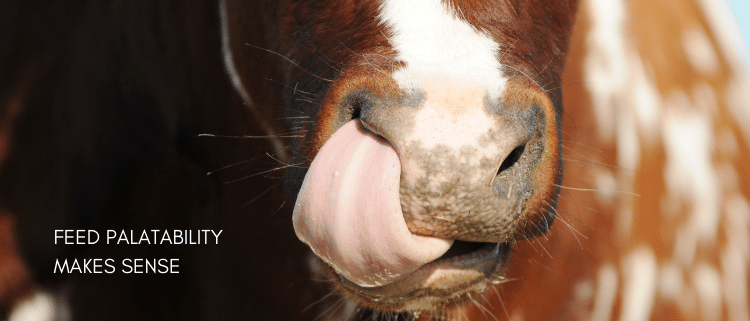Why feed palatability matters in animal husbandry
Feed palatability connects with the brain, which drives choices and feed intake. However, it can also have an impact on the emotions the animal producer associates with a certain feed and resulting choice in feed he makes for his production system.
How flavor becomes a memory trigger
The flavor of food has the power to bring back emotional memories. Many of us have had experiences where a certain smell triggers memories of a distinct event or location that we associate clearly with certain emotions. So why is this?
The olfactory receptors located throughout the nose and nasal cavity can really tell the difference between flavor nuances. They collect volatile molecules and send electrical signals to a small structure in the brain called the olfactory bulb.
The olfactory bulb is closely connected to the amygdala, an area in the brain involved in emotional learning, and the hippocampus, one of the most important brain structures for memory. Neuroscientists have suggested that these close connections explain the reason why flavor of food has the power to trigger emotional memories.
Of course, from an evolutionary perspective there is a survival advantage to this. The storage of emotional memories can help to mitigate the risk of consuming poisonous or rancid food. For example, if we become sick after consuming a particular type of food, that flavor can cause disgust or nausea every time we try to eat it again.
On the other hand, it also helps us to recall positive emotional memories associated with food, that can change our behaviour and the perception we have of a food.
The role of palatants in feed palatability
In animals feed palatability influences the preference an animal has for a feed when given the choice and is a factor that regulates feed intake. Animal preferences for feed result primarily from the senses of smell and taste. Taste buds can differentiate between the five basic tastes: salty, sweet, sour, bitter, and umami.
Palatants can improve the taste and smell of a feed to make it more appealing to livestock and increase feed intake, which again can help to increase weight gains and milk yield in animals. Palatants can also be used to mask unpleasant flavors to increase feed palatability. Many feedstuffs of low feed palatability but otherwise wholesome for animal consumption are relished when sprayed with molasses or artificial sweeteners, indicating a high dependence on taste in dietary selection.
Using an animal feed with palatants can improve feeding behaviour, leading to less waste and increased efficiency for the producer. Smell, and taste are especially important to young animals just starting to consume solid feed. That is why the application of suitable palatants in a starter feed to enhance feed palatability can help young animals to accept solid feed more readily, making a smoother transition from weaning.
Palatants can also have a considerable impact on the attractiveness of a feed to animal producers. An appealing smell to the animal producer can create positive emotions and a positive perception of the feed. Whereas a product with an unpleasant smell results in an unfavourable experience for the person feeding the product to livestock.
4 reasons to use palatants in the formulation of animal feed
- Increased attractiveness of feed to animals – improved feed palatability
- Animal welfare – stimulation of senses and positive emotions in the animal
- Increased flexibility in feed formulation
- Marketing purposes – give feed a unique flavor note to create positive emotions and brand recognition in the user of animal feed and differentiate between other products.
Pancosma palatant portfolio
A multitude of research and data has led Pancosma to create a robust offering of flavors and sweeteners. These are designed to ensure good mixability and dispersal in the animal feed, to produce an optimal effect.
The Pancosma palatants include:
- Flavors under the PAN-Tek brand – Discover Pancosma animal feed flavors
- Sweeteners under the SUCRAM brand – Discover Pancosma sweeteners for animal feed
- Multifunctional palatants under the MAGNASWEET brand – Discover Pancosma palatants
Quality and research behind Pancosma palatants
Pancosma has a long-standing history of contributing research-based, innovative solutions to the animal nutrition industry. In the 1980s, Pancosma was a pioneer in the high-intensity sweetener space and has continued to bring professionally researched, and thoroughly tested, products to market that are rigorously reviewed for product safety and quality.
Pancosma evaluates its palatant creations with well designed animal trials, which are complex to perform but essential to ensure success.
For more information on the quality standards of Pancosma please visit the Pancosma database for quality certificates here.
Related articles
Launch of 2 new cheesecake flavors
Improve palatability of aquaculture feed



